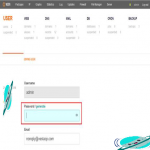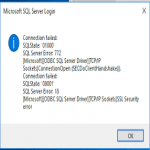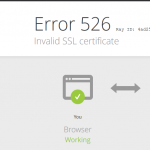Zimbra Collaboration Server is open-source collaborative software that comprises a mail server and a web client. It allows for email, calendaring, creating users and distribution lists, file sharing, chatting, managing mail server activities, etc.
Zimbra Collaboration Server is supported on various platforms including Ubuntu 12.04, Ubuntu 14.04, Ubuntu 18.04, Redhat Enterprise Linux 6, Redhat Enterprise Linux 7, CentOS6, CentOS 7, etc.
It is also supported on cloud platforms like VMware vCloud Director VMware vCloud Air and virtualization platform like VMware vSphere, XenServer 6, and KVM.
Here at LinuxAPT, as part of our Server Management Services, we regularly help our Customers to install Software on Ubuntu Linux Server.
In this context, we shall look into how to install and configure Zimbra on Ubuntu Server.
How to install Zimbra on Ubuntu ?
As per the Prerequisites required to run Zimbra collaboration server, you should have:
i. Ubuntu machine 18.04 – 64bit
ii. Root privileges
iii. Free Disk space 30 GB (minimum)
iv. RAM 8 GB (minimum)
v. CPU/Processor 2.0 GHz (minimum)
Also note that for the setup in this guide, we will use:
Zimbra: 8.8.15 GA Release
Domain: linuxapt.com
IP: 192.168.1.101
Steps to install Zimbra on Ubuntu 18.04 LTS.
To install Zimbra on Ubuntu, follow the steps given below:
1. Update and upgrade existing packages
First, you will need to update and upgrade the existing packages.
To do so, issue the below commands in Terminal:
$ sudo apt update
$ sudo apt upgrade2. Edit hostname and hosts file
Now, we will need to setup a hostname for Zimbra. To do so, edit /etc/hostname file using the below command in Terminal:
$ sudo nano /etc/hostnameReplace the hostname with the mail.linuxapt.com and then save and close the hostname file.
Replace mail.linuxapt.com with your own domain name.
Now edit the /etc/hosts file using the below command in Terminal:
$ sudo nano /etc/hostsType the following entry and then save and close the hosts file.
192.168.72.167 mail.linuxapt.com mailWhere 192.168.72.167 is the IP address of your Zimbra server, and mail.linuxapt.com is the fully qualified domain name (FQDN).
3. Install DNS server
In this step, we will install dnsmasq as our DNS server. However, before installing dnsmasq, we will first need to disable systemd-resolve as it runs on port 53. The DNS server dnsmasq also runs on port 53 which can cause port conflict.
Therefore, we will disable the systemd-resolve. Use the following command to do so:
$ sudo systemctl disable systemd-resolvedThen stop the systemd-resolved using the below command:
$ sudo systemctl stop systemd-resolvedNow remove the resolv.conf symlink file:
$ sudo rm /etc/resolv.confThen create a new resolv.conf file using the below command:
$ sudo sh -c 'echo nameserver 8.8.8.8 >> /etc/resolv.conf'Now to install dsmasq, issue the below command in Terminal:
$ sudo apt install dnsmasqOnce the installation of dnsmasq is completed, run the below command to edit the dnsmasq configuration file:
$ sudo nano /etc/dnsmasq.confAdd the following lines in the configuration file:
server=192.168.72.167
domain=linuxapt.com
mx-host= linuxapt.com, mail.linuxapt.com, 5
mx-host=mail.linuxapt.com, mail.linuxapt.com, 5
listen-address=127.0.0.1Then restart the dnsmasq service using the below command in Terminal:
$ sudo systemctl restart dnsmasq4. Downloading and installing Zimbra Collaboration Tool
i. Now download Zimbra for Ubuntu 18.04 LTS from the following link:
https://www.zimbra.org/download/zimbra-collaboration
Or use the following wget command in Terminal to download Zimbra:
$ wget https://files.zimbra.com/downloads/8.8.15_GA/zcs-8.8.15_GA_3869.UBUNTU18_64.20190918004220.tgzThe downloaded file will be in the .tgz format.
ii. Issue the below command in Terminal to extract the downloaded file:
$ tar -xvf zcs-8.8.15_GA_3869.UBUNTU18_64.20190918004220.tgziii. Navigate to the extracted folder using the cd command as follows:
$ cd zcs-8.8.15_GA_3869.UBUNTU18_64.20190918004220iv. Then run the installer as follows:
$ sudo ./install.shWhen the following Software License agreement appear, hit y to accept. Then again hit y to use Zimbra's package repository for installation.
When the following view appears, hit y for each of the packages except for the zimbra-imapd which is available only in the beta version.
When you are notified that the system will be modified, hit y after which the installation will be started.
Once the installation is done, the following view will appear and you will be asked to configure the unconfigured items.
Here, we will configure the admin password for Zimbra which is not yet configured. You can also see the Admin Password marked as ***** under the zimbra-store section. Hit 7 on your keyboard to enter into the zimbra-store section.
Now for Admin Password configuration, hit 4. You will be prompted to set the password for admin. Type any password (with a minimum of 6 characters).
Now hit a to apply the configurations and hit y again to save the configurations. When you are notified that the system will be modified, hit y.
Now you will see the following screen with the configuration completed message, hit Enter to exit.Now the installation of Zimbra mail server has been completed.
5. Access Zimbra administration page
Now you can access the Zimbra administration page. Open any web browser and type:
https://ip_adddress:7071or
https://FQDN:7071You will see the default Zimbra login page. Enter admin as username and type password you have set earlier (as described in the previous section).
Once you are logged in, you will see the summary page and other statistics.
[Need urgent assistance to configure Zimbra on Linux? We are available to help you. ]
Conclusion
This article will guide you on how to #install Zimbra on Ubuntu. Zimbra is an open-source #mail server that offers several features. It is recommended to install it in a #machine that has enough memory, processor, and disk space available.
To install and configure #Zimbra mail server:
1. Install System Packages.
2. Configure System #Hostname.
3. Add a Static IP Address.
4. Disable Unwanted Services.
5. Install Zimbra Collaboration Suite Open Source Edition.
6. Zimba Initial Configuration.
This article will guide you on how to #install Zimbra on Ubuntu. Zimbra is an open-source #mail server that offers several features. It is recommended to install it in a #machine that has enough memory, processor, and disk space available.
To install and configure #Zimbra mail server:
1. Install System Packages.
2. Configure System #Hostname.
3. Add a Static IP Address.
4. Disable Unwanted Services.
5. Install Zimbra Collaboration Suite Open Source Edition.
6. Zimba Initial Configuration.












